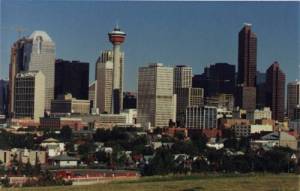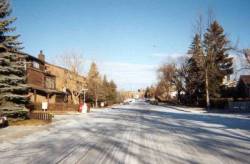
Photograph by J. Auld
Parkdale
is a residential community located in northwest Calgary. It is bounded
on the north by 16 Avenue, on the west by Shaganappi Trail, the south by
Parkdale Boulevard and on the east by 29th Street.
For the purposes of this project, the boundary on the east was extended to
Crowchild Trail, thus encompassing a part of West Hillhurst.
